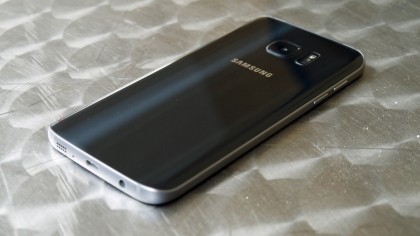HTC 10 vs Samsung Galaxy S7
Can HTC gain ground against Samsung?

If there's one phone HTC is scared of, it's surely the Samsung Galaxy S7. Samsung typically outsells HTC and the Galaxy S7 is one of the best handsets it's made in years.
But the HTC 10 looks fit for the fight. It plays to the company's strengths, with a strong design and impressive audio skills, while vastly improving in the areas where HTC is sometimes lacking.
It could be a tough call deciding between these two superphones, but to make things a little easier we've compared them across all the key areas.
- Read our hands on: HTC 10 review
Design
The HTC 10 has a fairly slim metal unibody, topping out at 9.0mm. Chamfered edges and an almost seamless design make the HTC 10 a great looking handset.
But Samsung, once the king of plastic, has really impressed with the Galaxy S7 too. Rather than being a slab of metal like the HTC 10 it has a glass back, with a metal edge. It's ever so slightly curved, yet still slimmer than the HTC 10 at 7.9mm and it looks gorgeous, though the back can be a bit of a fingerprint magnet.

Despite a different choice of materials, the two phones actually look quite similar, especially from the front, with both sporting oblong home buttons. Appearance wise it largely comes down to whether you prefer metal or glass for your handset, though the HTC 10 feels a little chunkier than the Galaxy S7.
The Samsung Galaxy S7 also has an ace up its sleeve- it's dust proof and water resistant, which the HTC 10 isn't.
Sign up for breaking news, reviews, opinion, top tech deals, and more.
Display
These two phones both have 1440 x 2560 screens and they're almost the same size, with the HTC 10 coming in at 5.2 inches and the Samsung Galaxy S7 marginally smaller at 5.1 inches.
That gives Samsung's phone a slightly higher pixel density of 577 pixels per inch, to the HTC 10's 564, but that's not a difference you'll notice.

One that you might notice though is the difference in technology. The Samsung Galaxy S7 has a Super AMOLED display, while the HTC 10 has a Super LCD 5 one. Samsung's screens can sometimes seem a little over saturated, but colors are actually quite natural on the S7 and it also sports strong contrast.
We'll reserve final judgement of the HTC 10's screen for our review, but it looks impressive too with HTC promising bright colors and impeccable responsiveness.
OS and interface
The HTC 10 runs Android Marshmallow overlaid with the company's Sense UI. This is one of the better Android overlays and it's been further refined here, with minimal bloat and a focus on customisation.

The Samsung Galaxy S7 is also on Marshmallow, but its TouchWiz overlay is slightly more intrusive. It comes with a large number of pre-installed apps and strays further from Material design than we'd like. It's not awful, but it's an acquired taste.
It's worth mentioning here that both handsets also have a fingerprint scanner, allowing you to keep your phone secure without having to tap out a PIN or password.
Power and storage
Both of these phones are packing a whole lot of power. The HTC 10 has a quad-core Snapdragon 820 chip clocked at up to 2.2GHz, coupled with 4GB of RAM.
The Samsung Galaxy S7 on the other hand comes in two different configurations depending on where you are. Either you get essentially the same set up as the HTC 10, albeit topping out at 2.15GHz, or you get an octa-core Exynos 8890 processor clocked at up to 2.3GHz, again with 4GB of RAM.

The upshot is that the HTC 10 and the Samsung Galaxy S7 are comparably powerful and both have more than enough grunt to blow through anything you're likely to throw at them.
Storage is somewhat similar too. Both phones have a microSD card slot and both have 32GB built in, though the HTC 10 will also be sold in a 64GB flavour in some locales.
James is a freelance phones, tablets and wearables writer and sub-editor at TechRadar. He has a love for everything ‘smart’, from watches to lights, and can often be found arguing with AI assistants or drowning in the latest apps. James also contributes to 3G.co.uk, 4G.co.uk and 5G.co.uk and has written for T3, Digital Camera World, Clarity Media and others, with work on the web, in print and on TV.